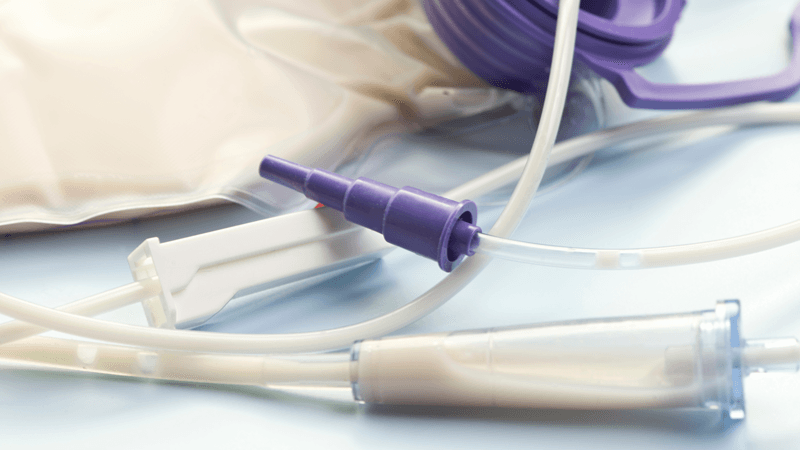Medications come in all sorts of different forms: pills, liquids, creams, etc. Depending on the type of medicine prescribed by a doctor, a syringe may be needed or recommended to administer the medication to minimize pain or ensure the medicine gets where it’s needed. In this post, we’ll help you navigate the basics of using a syringe and, when needed, finding and using a needle.
What is a Syringe
A syringe is a simple medical device that delivers medicine. They’re available in several different designs but the most common ones include a barrel, the round midsection where the medicine is placed, and a plunger that pushes out the liquid in the barrel. It can hold thick or watery liquids and syringes can be made from glass, plastic, or stainless steel.
To help you measure out medicine at the doctor-recommended dosage, most syringes include lines across the barrel. These notches are most often listed in centimeters (labeled as cc), in milliliters (mL), or both.
The tip of the syringe is where the medicine exits once the plunger is pushed. For medications that can be administered orally, you can use a standard syringe to dispense the meds. If a medication requires an injection into the skin, a vein, or muscle, you’ll need to insert a needle into the tip to do so.
How does a syringe work?
Although there are different types of syringes, the concept remains the same no matter what type you use. First, follow the instructions to get the medicine into the barrel. If you are using a needle with the plunger, simple doctor-approved guidelines for getting medicine out of a vial are available online.
In other cases when you are using a syringe without a needle, you might simply place the tip of the syringe into the medicine and pull the plunger back out of the barrel to pull the liquid into the syringe. In all cases, only fill the barrel to the dosage level the doctor has prescribed.
Remember, when you are ready to deliver the medicine, follow the doctor’s instructions. These will be included in the written instructions that came with the medication.
Finally, make sure to dispose of the syringe and needle properly. The FDA provides guidelines for those who work with syringes regularly. These guidelines will keep you safe and prevent the spread of disease.
What type of syringe options are available?
Many options are available depending on the type of syringe you need. Ask your loved one’s doctor for further information if you are unsure which to use. Some differences between syringes include:
Barrel: Thin barrels from roughly 1 cc/mL to 6 cc/mL hold less medicine and often work hand in hand with a needle. They can help administer medicine to the skin or muscles. Mid-range barrels from 10 cc/mL to 12 cc/mL often are paired with devices such as a catheter or medical tubing. The largest barrels range from 20 mL to 70 mL and commonly are used for irrigation, which means washing out parts of the body, like a wound, with water.
Needle gauge: The width and how much medicine a needle can hold is known as its gauge. Bigger gauges hold more medicine and have stronger sidewalls. They are best for thicker medicine and getting through thicker skin or more tissue. Fine or small gauges are a favorite because they cause less pain. They also are ideal for thinner medicines or lower dosages.
Needle length: Needles can be as short as ⅜ in. and as long as 3 ½ in. Shorter needles can be used for injections at the skin surface or just beneath it. Longer needles are best for injections into muscle or deep into the skin.
How do I know which syringe to use?
A doctor will be able to provide recommendations on which type of syringe to use. They will also help you determine the right needle in cases where one is needed. Click on the “Shop Now” button below to search through our collection of syringes and find the one that works best for you.
When is a needle used with a syringe?
A needle is used with a syringe when medicine must be injected into the body. A doctor will help you select the proper syringe, needle, and angle of injection to minimize pain and maximize the absorption of the medicine.
How can I learn to give medicine with any type of syringe?
The best place to start is by speaking with you or your loved one’s doctor. This will give you the opportunity to ask questions and the doctor or a member of their staff may be able to provide a demonstration on how to properly install a needle and give an injection.
There are several trustworthy websites managed by medical professionals where you can learn about giving medicine with any type of syringe. For example:
With the right type of syringe, you can make sure you’re properly administering medicine for yourself or for a loved one.



